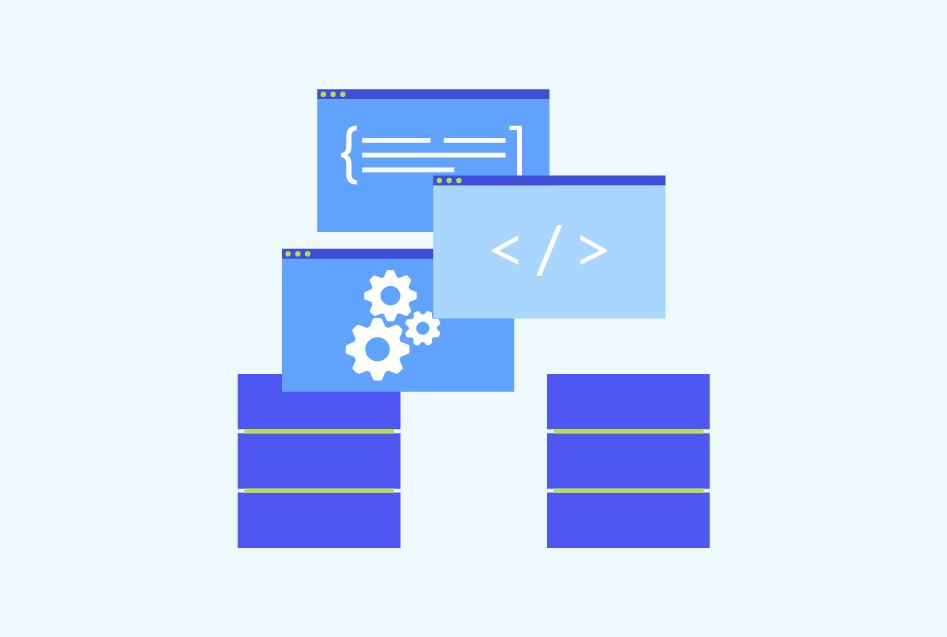Top 40 MySQL Interview Questions
Do you know that MySQL has a prevailing community of almost 5 million users which makes it one of the most popular relational database management systems?
MySQL is an open-source relational database management system (RDBMS) that is used to organize, store, and manage data. It is used for web-based applications because of its flexibility, speed, and reliability. It supports a wide range of programming languages and is used by a variety of web-based applications, like content management systems, and social networks.
To get through a MySQL interview, the candidate must know the basics of MySQL. They should thoroughly prepare common MySQL Interview Questions to land the job that they wish for. In this blog, we will go through a range of MySQL Interview Questions, including MySQL query interview questions and MySQL database interview questions.
Most Frequently Asked MySQL Interview Questions
Here are some of the most frequently asked MySQL interview questions. about ‘query.’
1. How to write a basic SELECT query in MySQL?
To write a basic SELECT query in MySQL:
- Use the SELECT command.
- Follow it up with the name of the column or columns you wish to retrieve.
- Followed by the name of the table from which you wish to retrieve.
2. How to write a subquery in MySQL?
To write a subquery in MySQL, you can enclose the inner query in parentheses and use it as input for the outer query.
3. Name the different types of joins in MySQL.
Inner joins, left joins, right joins, and full outer joins are the different types of joins in MySQL.
4. What is the difference between a DELETE statement and a TRUNCATE statement in MySQL?
The difference between the DELETE statement and the TRUNCATE statement is as follows:
- The rows from a table are deleted based on certain criteria with the help of a DELETE statement.
- All rows are removed from a table via the TRUNCATE statement.
5. What is the difference between a UNION statement and a UNION ALL statement in MySQL?
The difference between the UNION statement and the UNION ALL statement is as follows:
- The results of two or possibly more SELECT queries are merged into a single set with the UNION statement.
- The results of two or more SELECT operations are combined without removing duplicates with the help of the UNION ALL statement.
6. State the difference between a primary key and a unique key in MySQL.
The difference between the two keys in MySQL is as follows:
- A column or set of columns that identify each row in a table in a unique way is called a Primary key.
- A column or set of columns that do not permit duplicate values to be stored in them is called a Secondary key.
7. State the difference between a FLOAT data type and a DOUBLE data type in MySQL.
The difference between a FLOAT data type and a DOUBLE data type in MySQL is enlisted below:
- The FLOAT data type represents a single-precision floating-point number.
- The DOUBLE data type is the data type that represents a double-precision floating-point number.
8. What is a database index in MySQL?
A database index is a type of data structure that is used to boost the speed of database queries in MySQL. It can be established on one or more columns in a table and helps speed up searches and joins.
9. Name the different types of storage engines in MySQL.
The different types of storage engines in MySQL are as follows:
- The first storing engine is known as CSV.
- ARCHIVE is also a storage engine in MySQL.
- FEDERATED is another storage engine.
- Then there is InnoDB, another storage engine.
- MyISAM is also a storage engine.
10. Precisely state the difference between InnoDB and MyISAM.
The difference between the two storage engines is as follows:
- A non-transactional storage engine that is fast and simple is known as MyISAM.
- A transactional storage engine that provides support for transactions is known as InnoDB.
11. How would you create a new database in MySQL?
To create a new database in MySQL, use the following SQL statement-
CREATE DATABASE database_name;
12. How would you create a new table in MySQL?
To create a new table in MySQL, the following SQL statement is used-
CREATE TABLE table_name (
column1 datatype,
column2 datatype,
column3 datatype,
…
);
13. How would you add a new column to an existing table added in MySQL?
A new column is added to an existing table in MySQL, following the enlisted SQL statement-
ALTER TABLE table_name
ADD COLUMN column_name datatype;
14. List the difference between Inner Join and Outer Join.
The following is the difference between Inner Join and Outer Join:
- An Inner Join is a join that returns just rows with matching values in both tables.
- An Outer Join is a join that returns all of the rows from one table as well as the matching rows from the other table.
15. List the difference between a stored procedure and a function in MySQL.
The following is the difference between a stored procedure and a function in MySQL:
- A stored procedure is a set of SQL statements that can be called by other programs.
- The function returns a single value and can be used anywhere an expression is used.
MySQL Basic Interview Questions
Various applicants want to start their career with MySQL, for which they must understand the basics of the field. Following are the MySQL interview questions for freshers to help with the same:
16. Define MySQL.
It is an open-source relational database management system widely used for building web applications. It allows the users to organize, store, and retrieve data in a structured manner.
17. List the features of MySQL.
The following are some important features of MySQL:
- It supports various programming languages.
- It offers high performance and scalability.
- It has multiple storage engines.
- It offers replication.
- It provides security.
18. Define database schema.
The logical structure that defines the relationships between tables, columns, and indexes in a database is known as the database schema.
19. Explain the primary key in MySQL.
A unique identifier for a row in a table is known as a primary key. It ensures that each row in the table is unique and helps enforce referential integrity.
20. Explain the foreign key in MySQL.
A column in a table that refers to the primary key of another table is known as a foreign key in MySQL. It establishes a link between two tables and enforces referential integrity.
MySQL Interview Questions for Intermediate Candidates
Now that we have covered the basic MySQL interview questions and answers for freshers. The following are the top MySQL interview questions for intermediate candidates:
21. Define normalization in MySQL.
The process of organizing data in a database to help reduce redundancy and improve data integrity is known as normalization in MySQL.
22. Define denormalization in MySQL.
The process of adding redundant data to a database to improve performance is known as denormalization in MySQL.
23. Explain the stored procedure in MySQL.
A precompiled set of SQL statements is known as the stored procedure, they can be executed as a single unit and stored in a database.
24. Explain the trigger in MySQL.
A set of SQL statements, executed automatically in response to a specific event, like an update, insert, or delete operation on a table is known as a trigger in MySQL.
25. Explain indexing in MySQL.
Indexing is the method in MySQL that is used to create an index on one or more columns in a table to improve the query performance.
26. Explain MySQL view.
A virtual table that is based on the result of a SQL query is known as a view in MySQL. It provides a method to access and manipulate data from one or more tables as if they were a single table.
27. Compare CHAR and VARCHAR.
The following are the key comparison points between CHAR and VARCHAR:
| CHAR | VARCHAR |
| CHAR is a fixed-length data type. | VARCHAR is a variable-length data type. |
| Uses the same amount of storage space. | Uses the necessary amount of storage space. |
| The length of the data does not decide the storage space | The length of the data decides the storage space. |
| It is faster when the length of the data is constant. | It is faster when the length of the data is variable. |
28. What are the different data types in MySQL?
The integer, varchar, text, date, time, float, double, datetime, etc are the different data types in MySQL.
29. Define Join in MySQL briefly.
Join in MySQL is the process of combining two or more tables based on a common column or set of columns.
30. Define subquery.
The query that is embedded within another query and is used to retrieve data based on specific conditions is known as a subquery.
MySQL Advanced Interview Questions and Answers
Now that we have covered a wide range of questions that are asked during an interview with intermediate candidates. Let us also cover the MySQL interview questions and answers for experienced professionals:
31. Why is indexing in MySQL so important?
Indexing significantly improves the performance of queries that involves searching or sorting large datasets, hence it is important in MySQL.
32. Name the different types of indexes in MySQL.
The following are the different types of indexes in MySQL:
- Non-unique Index
- Full-text Index
- Spatial Index
- Primary Key Index
- Unique Index
33. How to create an index in MySQL?
To create an index in MySQL, the following SQL statement is used:
CREATE INDEX index_name
ON table_name (column1, column2, …);
34. Why is normalization important in MySQL?
Normalization helps minimize data inconsistencies and improves integrity which makes it an important function in MySQL.
35. Name the different normalization forms in MySQL.
The following are the different normalization forms in MySQL:
- First Normal Form which is also known as (1NF)
- Second Normal Form also called (2NF)
- Third Normal Form or (3NF)
- Boyce-Codd Normal Code also known as (BCNF)
- The Fourth Normal Form is also known as (4NF)
- Fifth Normal Form also known as (5NF)
36. Define transactions in MySQL and explain its use precisely.
A sequence of database operations in MySQL that are executed as a single unit of work is known as transactions. It helps to ensure data consistency and integrity because it provides the ability to commit a group of changes as a single unit.
37. How is ‘trigger’ used in MySQL?
It is used in MySQL to enforce business rules, validate data, or perform auditing operations.
38. List the difference between a table and a view in MySQL.
The following is the difference between a view and a table in MySQL:
- A virtual table based on the result of a query that does not store data but retrieves it is called a view.
- A physical object that stores data in MySQL is called a table.
39. Briefly define the temporary table and its use in MySQL.
A table created and used for a specific purpose in MySQL is known as a temporary table. It is used to improve query performance and simplify data manipulation.
40. How is the performance of a MySQL database optimized?
The following techniques are used to optimize the performance of a MySQL database:
- Appropriate indexes are used.
- The database schema is normalized.
- Long-running transactions are avoided.
- Use efficient SQL queries.
- Use the caching mechanism.
- MySQL server configuration can be tuned.
- The database performance should be monitored regularly.
41. Why is MySQL popular?
MySQL is a versatile database system. The following are the reasons why MySQL is popular:
- Open Source: It is open-source software, that is freely available for anyone to use, modify, and distribute.
- Scalable: It is designed to handle large amounts of data and can scale large databases.
- Compatible: It is compatible with various operating systems, programming languages, and platforms, which makes it a flexible choice for different applications.
- Performance: It is known for its high performance when used with large databases.
- Reliable: It is a reliable database system used by many large organizations and different applications.
- Security: It provides several security features like access control, encryption, availability of data, and integrity.
You can enroll yourself in an online SQL course to get a clear and better understanding of the subject.
Conclusion
These MySQL interview questions will help you understand the basics of MySQL, and provide a base for your knowledge and preparation for the interview. However, it is important to keep in mind that the actual questions will depend on the specific company and role that you are applying for. So, make sure you read the job description thoroughly before you give the interview.






